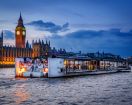Inghilterra, nuovo sistema a livelli: Londra e Liverpool entrano nel Tier 2


Dal 3 dicembre entrerà in vigore il nuovo sistema a livelli: Londra e Liverpool nel livello 2 ma Manchester, Newcastle e Birmingham nel livello 3.
31 sono le aree finite nel livello 3, 38 nel livello 2 intermedio e solo tre parti dell'Inghilterra saranno soggette al livello più basso di restrizioni. Oltre il 99% del Paese si troverà nei primi due livelli e solo l'Isola di Wight, la Cornovaglia e le Isole Scilly nel Livello 1 inferiore.
Matt Hancock ha svelato i nuovi livelli questa mattina alla Camera dei Comuni, confermando che l'ordine di restare a casa finirà, con il 2 di dicembre, e riapriranno negozi, palestre e cure personali.
Hancock ha riferito: "Non possiamo semplicemente premere un interruttore e cercare di tornare immediatamente alla normalità. Se lo facessimo, annulleremmo il duro lavoro di tanti e vedremmo l'NHS sopraffatto".
Con il 3 di dicembre torneranno inoltre anche la regola del sei e il coprifuoco alle 22:00.
Nel livello 2, in cui si trova Londra, sarebbe consentito a pub e ristoranti di rimanere aperti, a patto di servire piatti di cucina. Le famiglie potranno incontrarsi solo all'esterno.
Le aree del livello 3 avranno accesso a nuovi test a risultati rapidi in meno di un'ora, una strategia che ha visto diminuire drasticamente i casi a Liverpool.
Il nuovo sistema dovrebbe rimanere in vigore fino alla primavera, con un limitato allentamento delle regole a Natale.
Questo è l'eco completo delle zone e del livello di appartenenza:
Tier 1: Medium alert
South East
- Isle of Wight
South West
- Cornwall
- Isles of Scilly
Tier 2: High alert
North West
- Cumbria
- Liverpool City Region
- Warrington and Cheshire
Yorkshire
- York
- North Yorkshire
West Midlands
- Worcestershire
- Herefordshire
- Shropshire and Telford & Wrekin
East Midlands
- Rutland
- Northamptonshire
East of England
- Suffolk
- Hertfordshire
- Cambridgeshire, including Peterborough
- Norfolk
- Essex, Thurrock and Southend on Sea
- Bedfordshire and Milton Keynes
London
- all 32 boroughs plus the City of London
South East
- East Sussex
- West Sussex
- Brighton and Hove
- Surrey
- Reading
- Wokingham
- Bracknell Forest
- Windsor and Maidenhead
- West Berkshire
- Hampshire (except the Isle of Wight), Portsmouth and Southampton
- Buckinghamshire
- Oxfordshire
South West
- South Somerset, Somerset West and Taunton, Mendip and Sedgemoor
- Bath and North East Somerset
- Dorset
- Bournemouth
- Christchurch
- Poole
- Gloucestershire
- Wiltshire and Swindon
- Devon
Tier 3: Very High alert
North East
- Tees Valley Combined Authority:
- Hartlepool
- Middlesbrough
- Stockton-on-Tees
- Redcar and Cleveland
- Darlington
- North East Combined Authority:
- Sunderland
- South Tyneside
- Gateshead
- Newcastle upon Tyne
- North Tyneside
- County Durham
- Northumberland
North West
- Greater Manchester
- Lancashire
- Blackpool
- Blackburn with Darwen
Yorkshire and The Humber
- The Humber
- West Yorkshire
- South Yorkshire
West Midlands
- Birmingham and Black Country
- Staffordshire and Stoke-on-Trent
- Warwickshire, Coventry and Solihull
East Midlands
- Derby and Derbyshire
- Nottingham and Nottinghamshire
- Leicester and Leicestershire
- Lincolnshire
South East
- Slough (remainder of Berkshire is tier 2: High alert)
- Kent and Medway
South West
- Bristol
- South Gloucestershire
- North Somerset
-
Scritto da Dora Bortoluzzi,26 Novembre 2020









